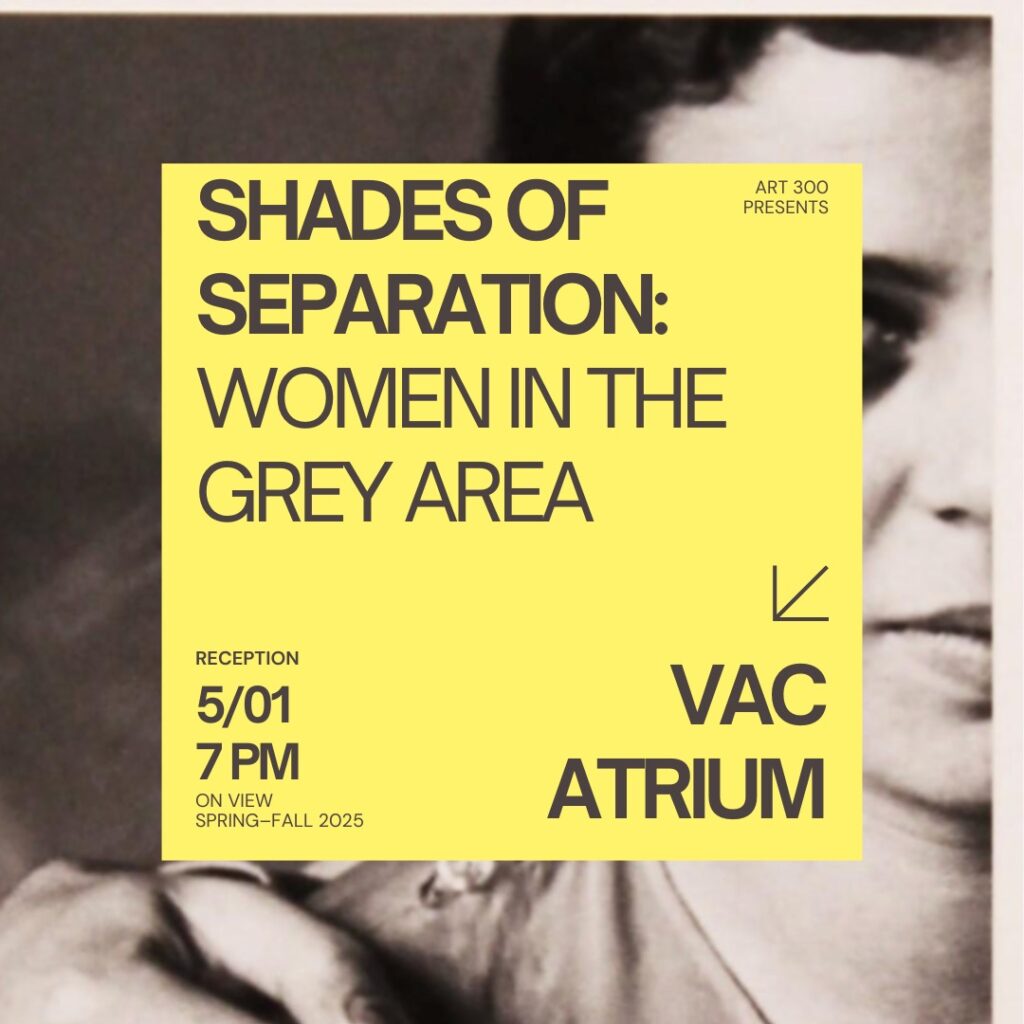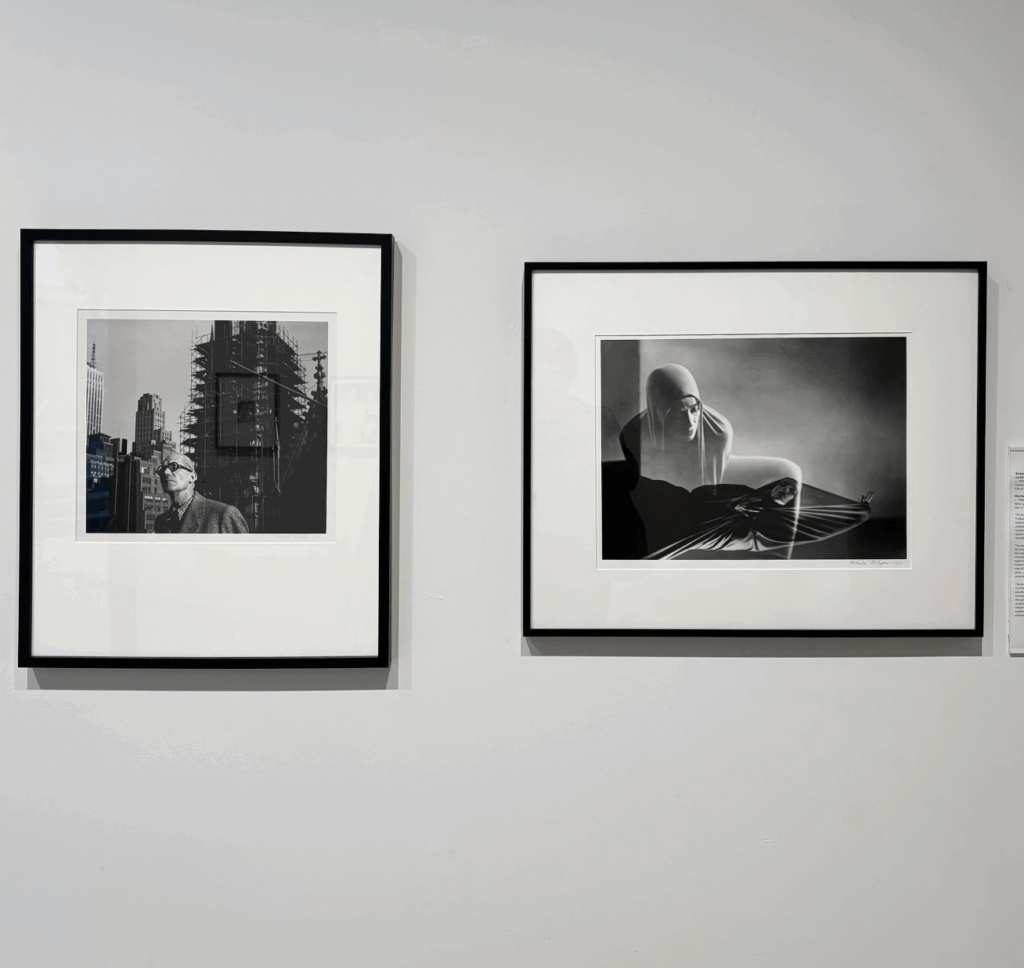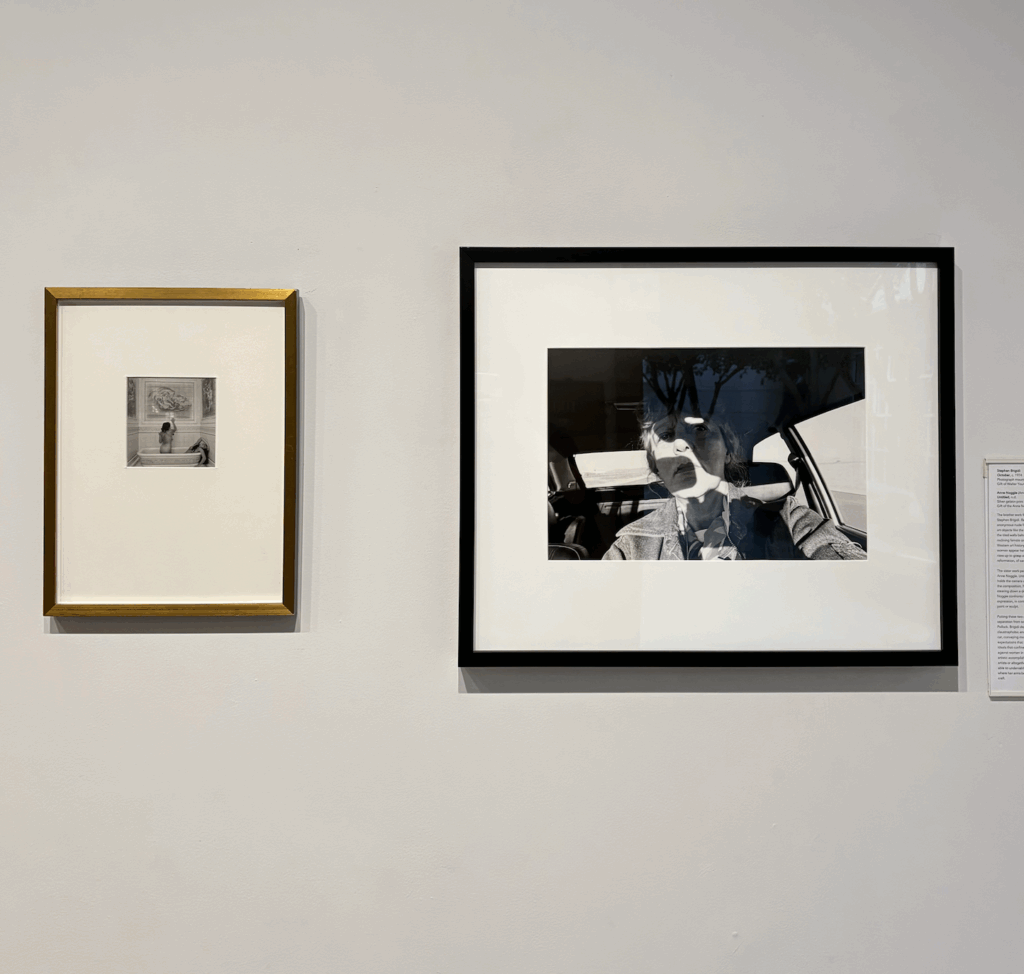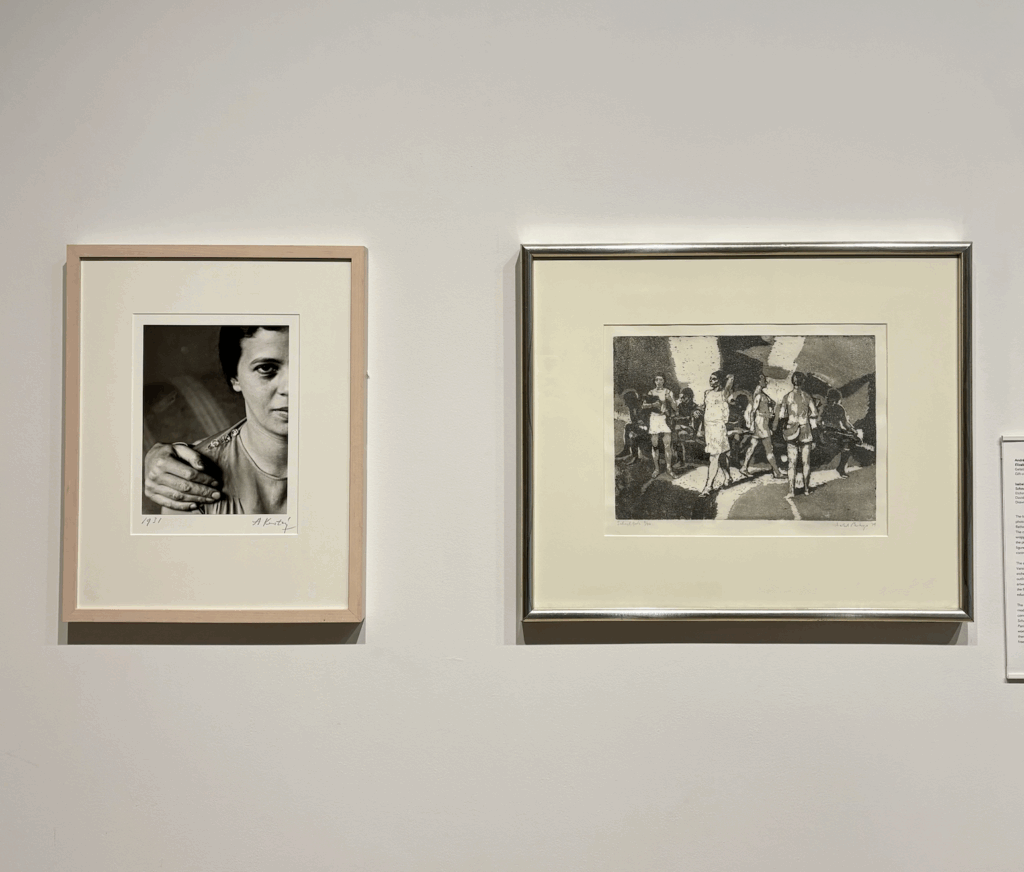Since the spring, the Belk Visual Arts Center has displayed the product of months of learning, critical thinking, and collaboration. On view in the rear of the Missy Boaz Woodward ’78 Atrium, Shades of Separation: Women in the Grey Area represents the combined efforts of fifteen students, mostly current senior art history majors.
ART300, or Critical Theory for Visual Study, is a methods course through which rising art historians investigate critical frameworks for artwork analysis. Under the guidance of Art Department Chair John Corso-Esquivel, the students illustrated their learning through this class-wide curatorial project. In March, the students developed several exhibition concept proposals, with gender being a common theme shared among many of the propositions, before voting as a group and selecting Shades of Separation.
The students then each selected a role in the project’s development, into which they channeled their focus throughout the following weeks. The class democratically selected the eight works in the exhibition: after perusing the Van Every/Smith Galleries’ Collection, which consists of over four thousand pieces, students nominated a range of artworks. The class then engaged in several discussion forums, weighing the merit of each work in relation to their chosen exhibition theme before conducting votes to ensure the majority of the class favored each selection.
With the help of Lia Newman, Marisa Pascucci, and student gallery interns, the class installed the exhibition. Students divided the eight selected artworks into four pairings of two, each containing one “brother work” and one “sister work.” Each pairing emphasizes a different aspect of the gendered gaze, illuminating problematic conventions of power and separation.
“Shades of Separation” is an exploration of the male-female binary. This visual survey of the positions women and men inhabit as the product of historically constructed narratives promotes reflection upon how such ideologies are entrenched within academic canons and artistic institutions. Moreover, binaries, wherein one body is central, while the other occupies a position on the margins, are structures to which we have grown accustomed. The gender dynamics on display in this exhibition exemplify the ramifications of such systems, illustrating women’s position on the periphery as marked and othered.
The class hosted an opening reception on May 1, 2025, at 7pm, during which students and faculty engaged in rich conversation. For a look at the exhibition, see the images below.
This project was partially funded by a Davidson Arts and Creative Engagement AIR Grant & Davidson Friends of the Arts.
The class would like to offer a special thank you to Art Department Chair John Corso-Esquivel for helping them to grow as theorists and curators. Thank you also to Lia Newman and Marisa Pascucci for their guidance throughout the curatorial process.
-Heidi McGannon ’26
Graphic created by Mallory Kavanaugh ’26.


L: Andy Warhol, Unidentified Men, Black and white print, 8 x 10 in (20.32 x 25.4 cm).
R: Andy Warhol, Mary Lee and Belinda, 1980, Polaroid, 4.25 x 3.375 in (10.8 x 8.57 cm).

L: Barbara Morgan, Le Corbusier in New York, 1946, Gelatin silver print, 12.25 x 13.5 in (31.12 x 34.29 cm), Framed: 25 x 21 in (63.5 x 53.34 cm).
R: Barbara Morgan, Martha Graham, Lamentation (Double Image), 1935, Silver gelatin print, Framed: 21.75 x 26.5 in (55.25 x 67.31 cm).

L: Stephen Brigidi, October, 1974, Photograph mounted to drawing Board, 5 x 5 in (12.7 x 12.7 cm).
R: Anne Noggle, Untitled, No date, Silver gelatin print, 14 x 17 in (35.56 x 43.18 cm), Framed: 21 x 25 in (53.34 x 63.5 cm).

L: André Kertész, Elizabeth, 1931, Paris, 1931, Gelatin silver print, 9.5 x 7.25 in (24.13 x 18.42 cm), Framed: 18.75 x 14.75 in (47.63 x 37.47 cm).
R: Isabel Bishop, School Girls, 1974, Etching and aquatint on paper, Framed: 18.75 x 22.25 in (47.63 x 56.52 cm).
